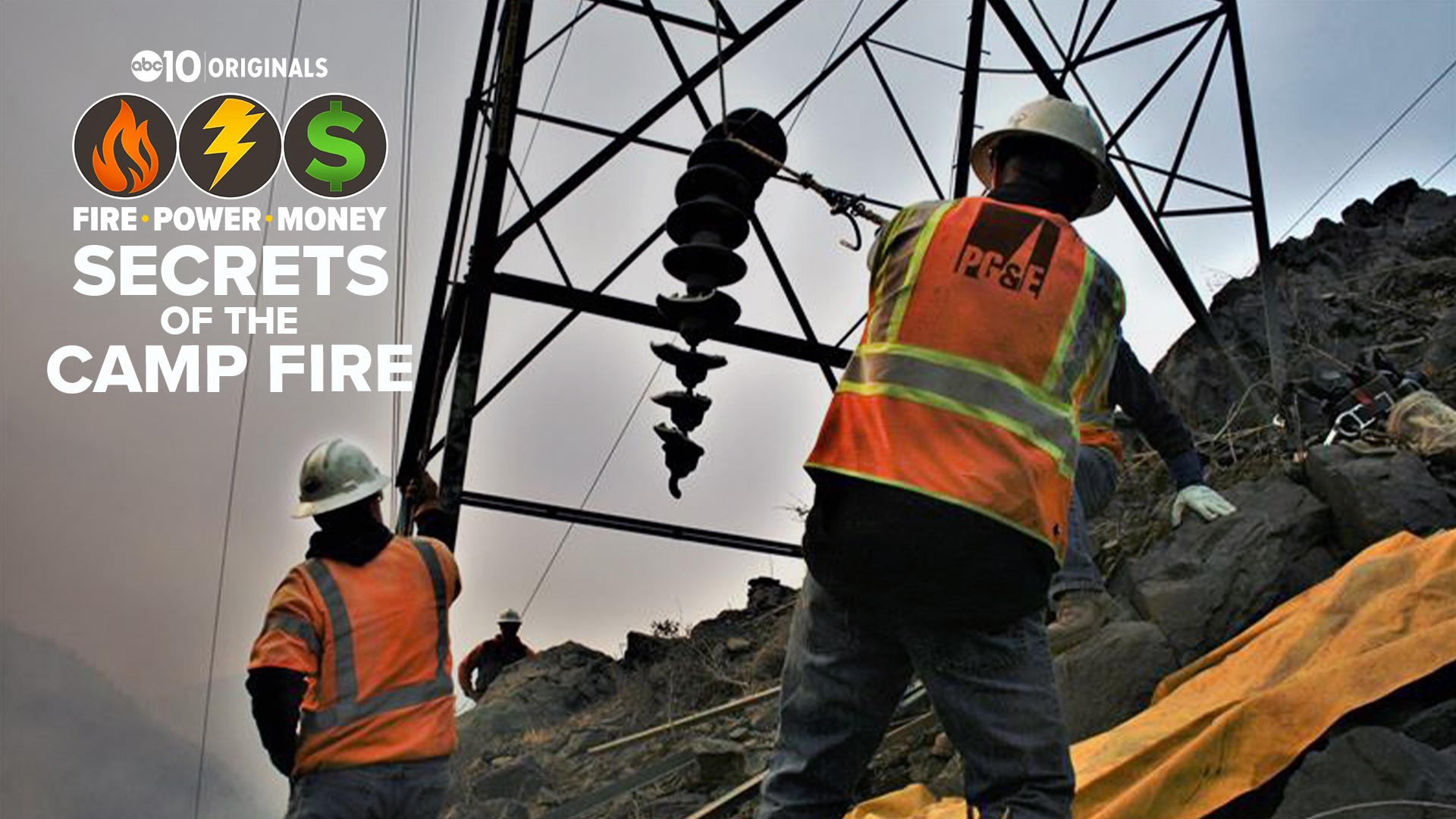SACRAMENTO, Calif — Marc Noel and his team made history when they convicted PG&E of the deadliest homicide ever committed by a corporation on U.S. soil, but it doesn’t always feel like an accomplishment.
“They're not learning from their history, and that's why they keep repeating it,” Noel said of PG&E. “We had hoped that the job we did in the Camp Fire would cause that to change. And apparently it hasn't.”
PG&E pleaded guilty to the Camp Fire charges Noel developed: 84 felony counts of involuntary manslaughter and one felony for sparking the fire through reckless, criminally negligent behavior.
Since then, Noel does see PG&E changing. But not in the way he’d like.
“[PG&E] is not so much learning how to do things safer,” Noel said. “That would be the hope. But instead, what they're learning is how better to bury their crimes.”
Three years after the Camp Fire, Noel is already investigating PG&E again. The company’s power lines are suspected of sparking the 963,000-acre Dixie Fire this July.
“I've never been able to get out of it because now I'm right back in it,” said Noel, who’s leading the new five-county criminal investigation of PG&E.
The Dixie Fire isn’t an isolated incident.
Since the Camp Fire, PG&E has been charged with felonies in the 2019 Kincade Fire, and it’s been charged with four felony manslaughter counts in the 2020 Zogg Fire.
As the PG&E-linked disasters continued, California's state government accommodated PG&E's return to profit. ABC10's FIRE - POWER - MONEY investigation revealed that Gov. Gavin Newsom's office crafted a state law to prop up PG&E's finances, supported a bankruptcy plan that prioritized business clients of the governor's close friends over PG&E's fire victims, and exerted control over PG&E's independent state regulators.
PG&E, which has repeatedly declined to make its leaders available to ABC10 for interviews, said in a written statement that it is making improvements “to help make sure the tragedy that occurred here never happens again, in any of the communities we serve.”
For Noel, the new fires add urgency to a question that’s languished in a Sacramento appeals court for more than a year: how much of the evidence of PG&E’s crimes will the public be allowed to see?
A lawsuit funded by PG&E has successfully blocked the release of the 7,000-page grand jury transcript.
“I would like that every person in PG&E can read those transcripts, and they can see the mistakes that were made and they can learn from them and they can do a better job,” Noel said. “It cost 84 people their lives, and it cost thousands and thousands of people everything but their lives.”

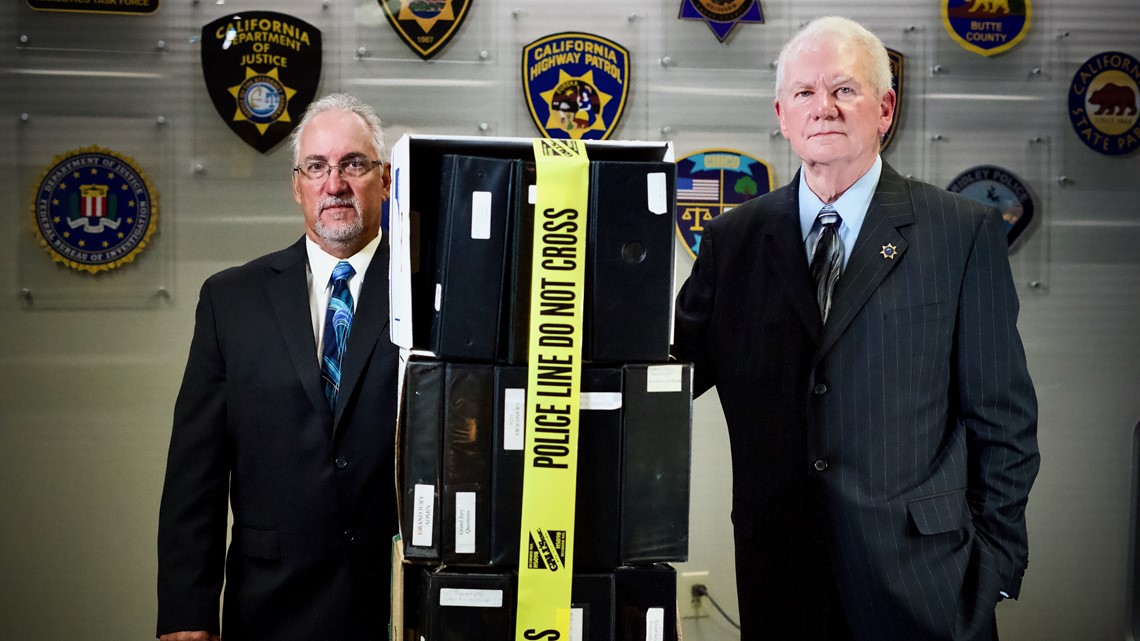
“What we have in here is our case,” said Butte County District Attorney Mike Ramsey, gesturing to a stack of binders that fills up three copy paper boxes. “For me to see this locked up... is troubling.”
Ordinarily, California law makes grand jury records public 10 days after a criminal case is finished.
In 2020, judges at California’s 3rd District Court of Appeal blocked the release of the Camp Fire documents at the request of 22 current and former PG&E employees who argued that their names should be kept from the public for safety reasons.
ABC10 filed a “friend of the court” argument last year, joined by the Wall Street Journal, seeking release of the documents.
After ABC10 asked court staff last month about the lengthy delay in a decision, the court announced that it was prepared to make a decision. Parties have until Nov. 15 to state whether they want to make oral arguments.
‘LETTING THE MURDERER INTO THE CRIME SCENE’
Despite the secrecy surrounding the grand jury record, evidence of PG&E’s crimes is still trickling out three years after the Camp Fire.
Through state transparency laws, ABC10 obtained a trove of nearly 1,500 photos and video clips never shared in public before.
They reveal new details of Cal Fire’s origin and cause investigation of the Camp Fire, which ABC10 also obtained.
Six days after Paradise burned, at a location eight miles away in the Feather River Canyon, one of PG&E’s own workers pointed out the smoking gun that would be used to convict his company.
“See that bottom string that’s hanging upside down,” the worker asked, pointing toward part of PG&E’s historic Caribou-Palermo transmission line near Pulga, California in the wind-prone Feather River Canyon.
“Oh yeah,” a Cal Fire arson investigator replied.

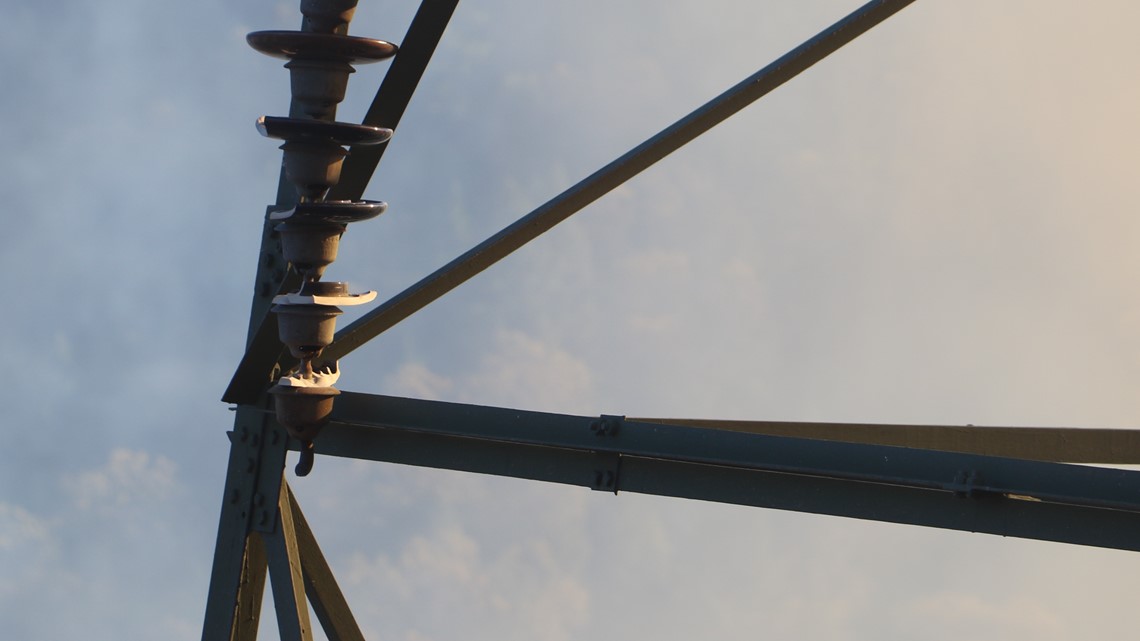
It was a string of freshly broken ceramic insulators meant to keep the power line from touching the steel tower holding it up.
The insulators were originals from the year 1921, dangling from the bare metal wire that had slammed into the steel frame of PG&E tower 27/222 the week before.

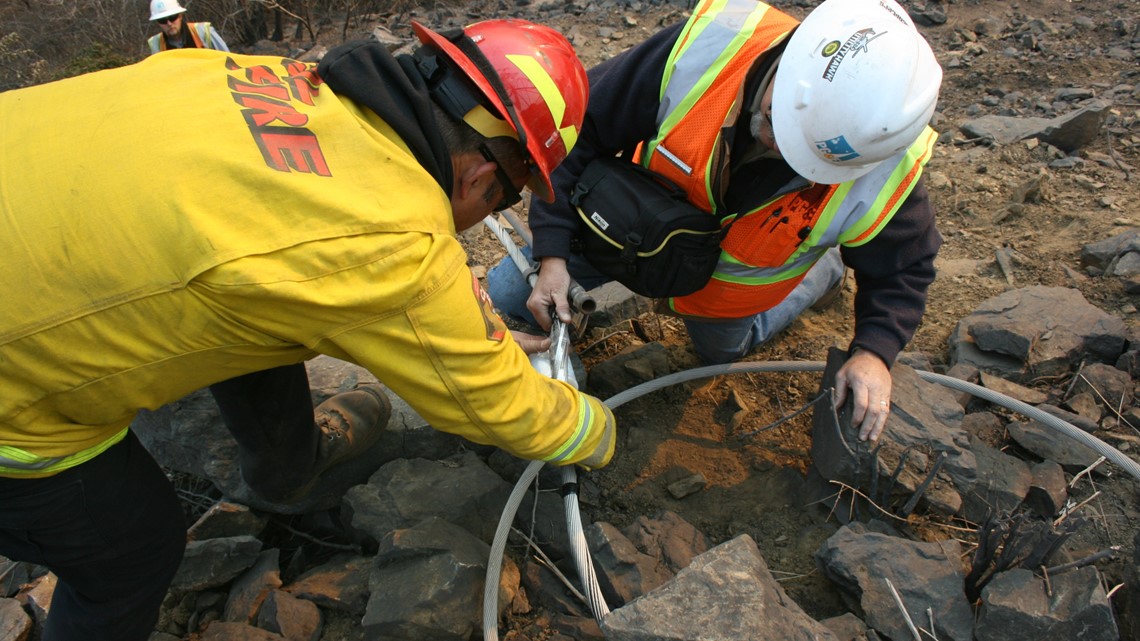
Scorch marks showed where 115,000 volts surged from that wire into the tower.
Investigators found bits of molten metal on the ground below, the sparks that lit the Camp Fire.

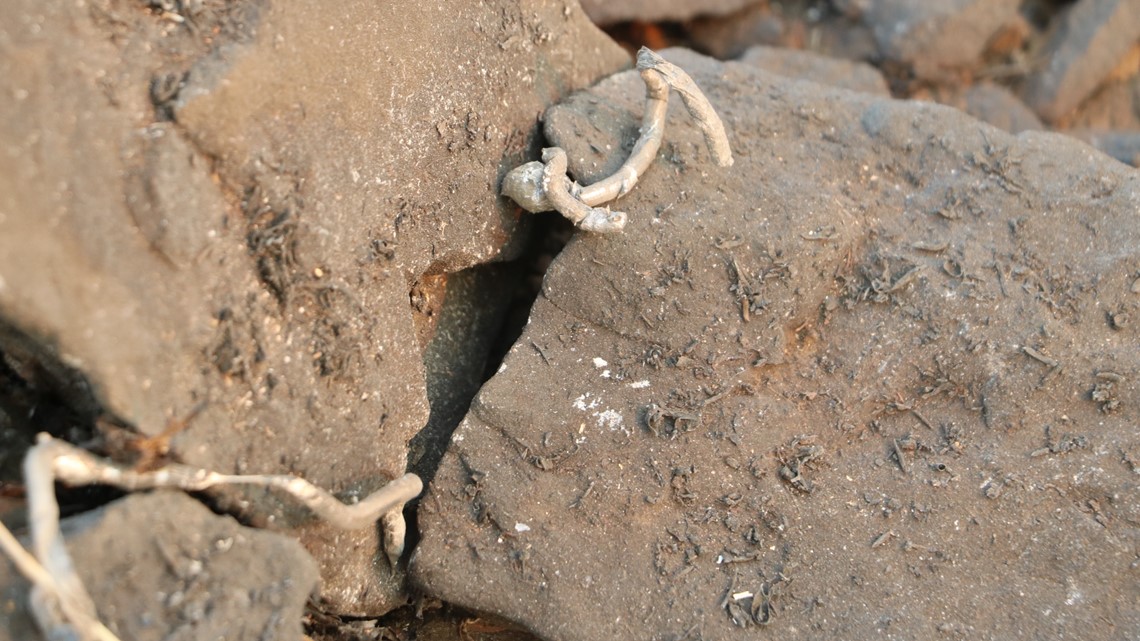


Arson investigators had already found the reason the wire fell, still hanging in plain sight beneath the insulators: PG&E had allowed an original cast iron hook to wear down for so long that it wore through and broke.
Metallurgists with the FBI Laboratory in Quantico, Virginia would later analyze the hook to help prosecutors determine PG&E had neglected to find and replace the hook for at least 97 years.


But first, on the morning of Nov. 14, 2018, arson investigators had to get it down off the tower.
To do that, they were at the mercy of PG&E.
The photo and video evidence shows PG&E collecting the hook, the smoking gun in its own homicide case. It never sat well with Marc Noel.
"Literally, we’re letting the murderer into the crime scene and telling them to collect our evidence for us,” Noel said in a 2020 interview.
Cal Fire’s report notes “PG&E was the only available option” to collect the evidence, due to an approaching rainstorm and a lack of qualified contractors willing to take the job.
“They were all... beholden to PG&E,” Ramsey said. “We were just kind of stuck with that.”


Video of the evidence collection captured Cal Fire investigators haggling with PG&E workers over how to get the hook and the power line down.
“[Can you] bring it down whole,” the investigator asked. “Or is that not gonna work?”
“I don’t think we have enough rigging for that, but let me double-check,” PG&E’s worker replied. “We’ll give it a helluva shot, bud.”
It didn’t come down whole. 25 minutes later, the video shows a pair of PG&E workers popping the insulators off of the power line before they were lowered to the ground.
WILL RECORDS BE RELEASED, OR WILL IT BE ‘GOBBLEDY-GOOK?’
While the newly-unveiled Cal Fire evidence shines light on the physical problem that sparked the fire, the sealed transcript contains many details of how PG&E’s behavior amounted to a crime.
“This is the people testifying… and the evidence that flowed from that testimony,” Ramsey said. "What exactly was that evidence that so scared [PG&E] they felt that they needed to plead [guilty] to 84 deaths?"
In public, PG&E said it was “fully cooperating” with the Camp Fire investigation, but behind the scenes, PG&E’s people didn’t talk willingly.
“Many of those witnesses came with attorneys that PG&E had bought for those witnesses,” Ramsey said.
Butte County DA Mike Ramsey used a grand jury to subpoena dozens of PG&E employees and put them on the stand.
PG&E did not respond when asked to explain how that amounts to “fully cooperating.”
The 7,000-page transcript of the grand jury’s investigation contains PG&E’s employees and regulators talking for almost a year.


The record is the closest thing the Camp Fire victims will ever get to a homicide trial.
Attorneys for the 22 PG&E employees who sued to block the release of those documents have suggested that it may be best to keep all of the pages secret, or to black out all 200 PG&E employee names and job titles that appear in the record.
Ramsey warns such blackouts could turn the record of the case into “gobbledy-gook.”
“Will it be understandable? Will it be so heavily redacted that you really can't understand it?” he asked.
WHICH PG&E WORKERS ARE HOLDING UP THE RECORDS?
PG&E admitted to funding the lawsuit, calling it a wildfire-related expense and insisting in a statement that “there is no new fact or understanding to be gained from having the names of the employees included in the transcripts.”
In an ironic twist for a case arguing for the redaction of names, the attorneys failed to properly black out the names of the 22 PG&E workers they represent.
ABC10 obtained the names by copying and pasting them from a digital version of the lawsuit filed with the court.
The list of names proves the attorneys’ claim that the workers are “low- and mid- level employees” is false.
Two of the employees, Dave Gabbard and Raymond Thierry, appear on PG&E’s own 2017 list of “high-level” employees, filed on the docket in PG&E’s federal criminal case for the deadly 2010 San Bruno gas explosion.
Gabbard is PG&E Senior Director of Transmission Asset Management and has appeared publicly in PG&E corporate video.
Thierry is PG&E’s Director of Gas Distribution Integrity Management, one of several gas division employees that Camp Fire prosecutors used to draw parallels between the San Bruno case and Paradise.


ABC10 has previously named four other employees who worked on a PG&E lab report that identified the same kind of hook-and-eye wear found at the Camp Fire’s origin point.

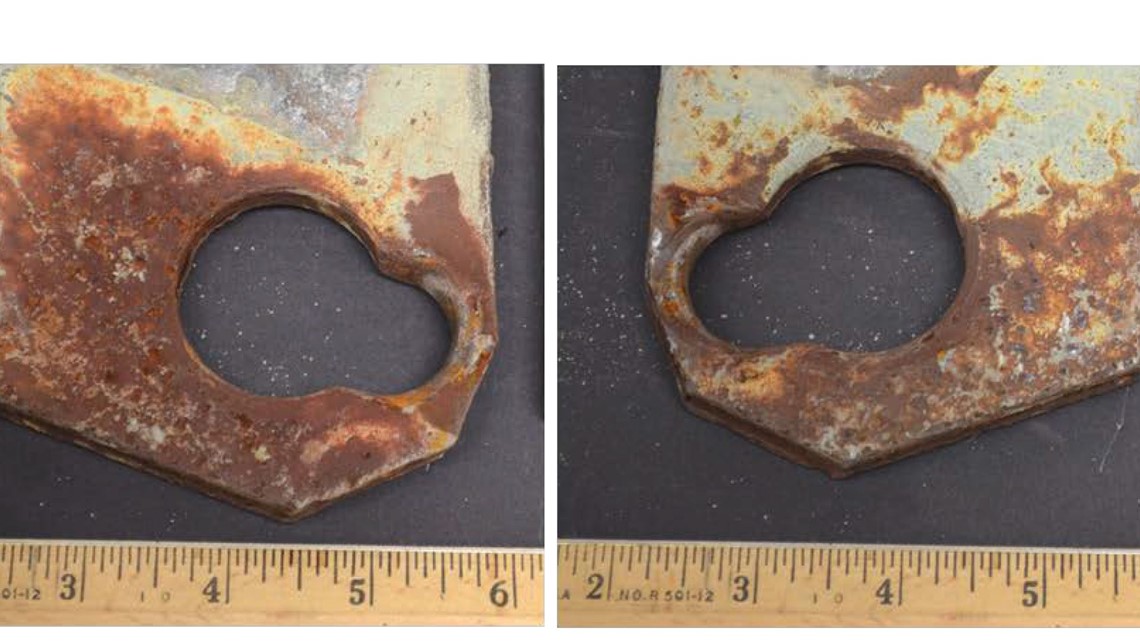
RELATED: ABC10 Investigation: PG&E knew old power line parts had ‘severe wear’ months before deadly Camp Fire
Many of the other PG&E workers suing for anonymity maintain public profiles online which disclose that they work for PG&E.
The LinkedIn profile of one finance office worker boasts that he reduced PG&E’s expenses on “maintenance work" by $2.8 million in the years before the Camp Fire.
SECRETS ‘CORROSIVE TO A FREE SOCIETY’
The impact of PG&E’s crimes can’t be overstated. The Camp Fire killed an entire community.
The fire burned down 14,000 family homes in and around Paradise, fewer than one in ten of which have been rebuilt. The Town of Paradise and Butte County report 1,350 completed home rebuilding projects so far.
The fire displaced 26,000 people, most of whom moved away.

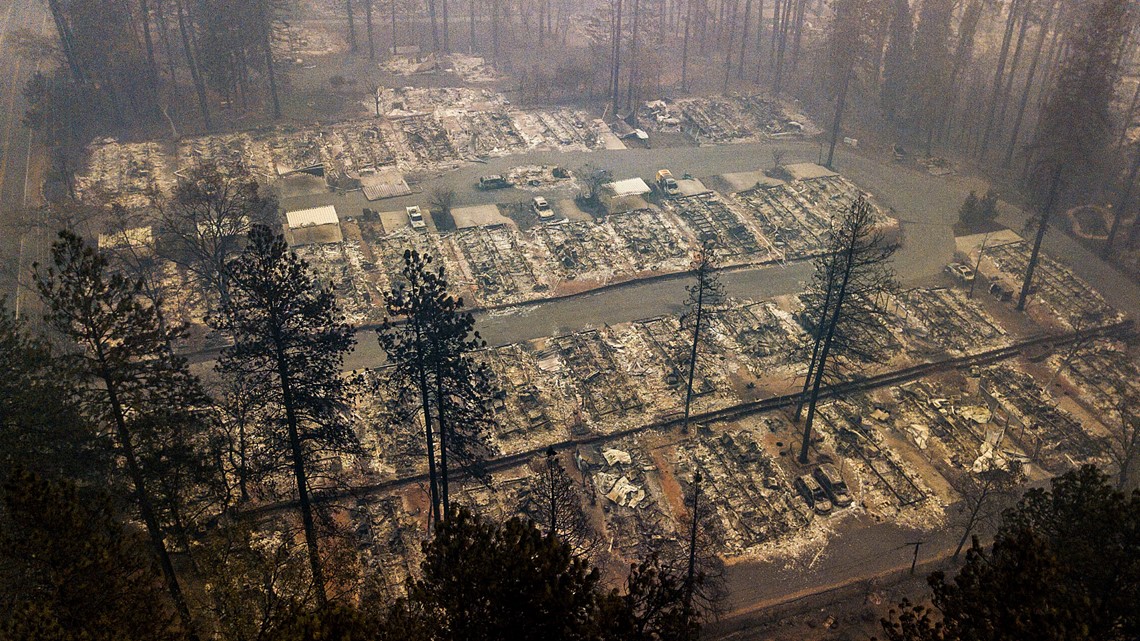
“I have a different neighborhood, different doctors, different stores, a different church, a different job, a different house, different local news, different streets and a different way of life,” said Karen Corson, who relocated from Paradise to the suburbs of Sacramento. “Do I want PG&E to be held accountable for forcing this on me? Yes.”
Corson used to run the lab at Paradise’s Feather River Hospital.
She escaped the burning town, by driving with a hospital patient in her personal car.
“I still have not received any money from the settlement with PG&E,” Corson said. “But the money is not what really matters. It is holding PG&E accountable so this doesn't happen again.”
U.S. Census data show Butte County’s population declined by nearly 20,000 people after the Camp Fire.
“You have to recalibrate your government based upon that,” Ramsey said, pointing to the trauma of the evacuation as a factor. “A huge amount of the population are suffering PTSD.”
The absence of the complete record of facts has contributed to the proliferation of falsehoods about the fire, Ramsey said.
“People without information make up their own facts,” Ramsey said. “So now we've got space lasers.”
Conspiracy theorists have speculated that the Camp Fire was actually an attack by energy beams from above. The fact cited by these theorists as evidence is the fact that many buildings in Paradise burned while nearby trees did not.
This was actually a phenomenon brought on by what firefighters call “ember cast.” Hot embers carried by extreme wind had a tendency to get caught up on buildings more easily than on trees.

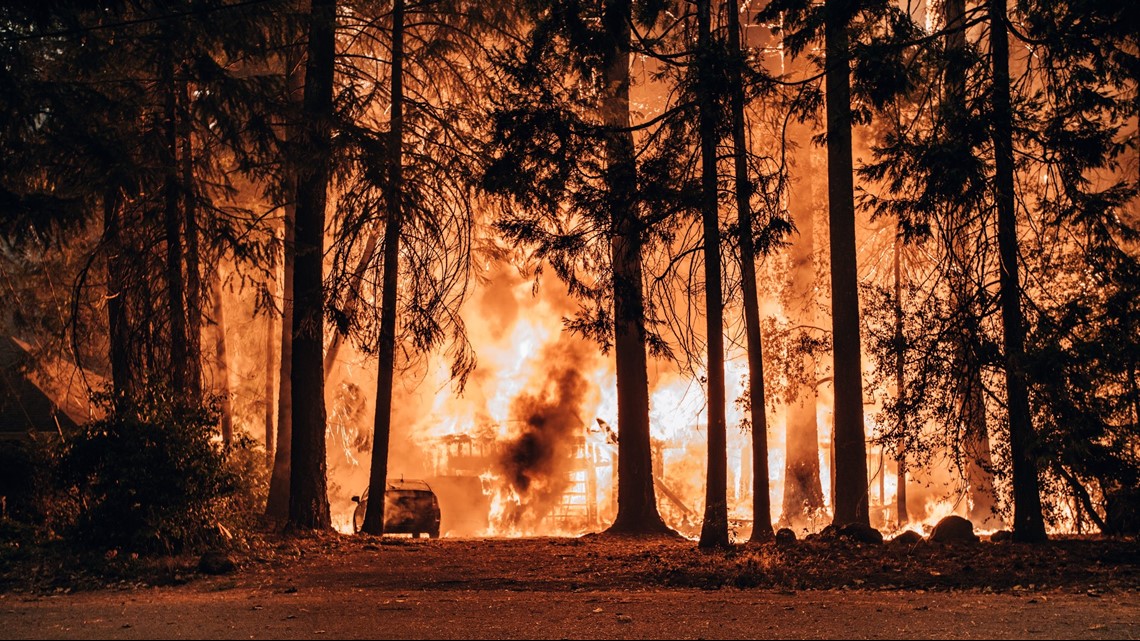
ABC10 reporter Brandon Rittiman was in Paradise as it burned and witnessed embers light many buildings on fire.
The truth, according to prosecutors, is much simpler: a powerful California corporation cut back so severely on maintenance that it was criminal and then took steps to keep any individuals in the company from being held liable for the crimes.
The prosecutors hope the appeals court will soon let you read the truth as told by PG&E’s own people.
They argue the public and the people burned out by PG&E’s crimes have a right to know.
“Such secrets would be corrosive to a free society,” Ramsey said.
EDITOR'S NOTE: An earlier version of this story reported an outdated number of homes rebuilt in the Camp Fire burn area. The correct, most current number as of the fire's third anniversary is 1,350 of the 14,000 homes destroyed.
GO DEEPER: This story is part of ABC10's FIRE - POWER - MONEY reporting project. New episodes air August 10, 11, and 12. If you have a tip that could reveal more about California's crisis with utilities and wildfires, please contact investigative reporter Brandon Rittiman at brittiman@abc10.com.
WATCH THE FULL SERIES: Fire-Power-Money
Read the full Cal Fire investigation report:

